ACSL4-mediated lipid rafts prevent membrane rupture and inhibit immunogenic cell death in melanoma
- PMID: 39343834
- PMCID: PMC11439949
- DOI: 10.1038/s41419-024-07098-3
ACSL4-mediated lipid rafts prevent membrane rupture and inhibit immunogenic cell death in melanoma
Abstract
Chemotherapy including platinum-based drugs are a possible strategy to enhance the immune response in advanced melanoma patients who are resistant to immune checkpoint blockade (ICB) therapy. However, the immune-boosting effects of these drugs are a subject of controversy, and their impact on the tumor microenvironment are poorly understood. In this study, we discovered that lipid peroxidation (LPO) promotes the formation of lipid rafts in the membrane, which mediated by Acyl-CoA Synthetase Long Chain Family Member 4 (ACSL4) impairs the sensitivity of melanoma cells to platinum-based drugs. This reduction primarily occurs through the inhibition of immunogenic ferroptosis and pyroptosis by reducing cell membrane pore formation. By disrupting ACSL4-mediaged lipid rafts via the removal of membrane cholesterol, we promoted immunogenic cell death, transformed the immunosuppressive environment, and improved the antitumor effectiveness of platinum-based drugs and immune response. This disruption also helped reverse the decrease in CD8+ T cells while maintaining their ability to secrete cytokines. Our results reveal that ACSL4-dependent LPO is a key regulator of lipid rafts formation and antitumor immunity, and that disrupting lipid rafts has the potential to enhance platinum-based drug-induced immunogenic ferroptosis and pyroptosis in melanoma. This novel strategy may augment the antitumor immunity of platinum-based therapy and further complement ICB therapy.
© 2024. The Author(s).
Conflict of interest statement
The authors declare no competing interests.
Figures

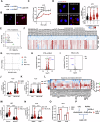

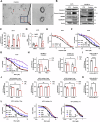
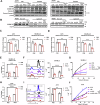
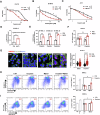

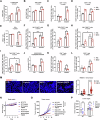
Similar articles
-
Inhibition of ACSL4 attenuates ferroptotic damage after pulmonary ischemia-reperfusion.FASEB J. 2020 Dec;34(12):16262-16275. doi: 10.1096/fj.202001758R. Epub 2020 Oct 18. FASEB J. 2020. PMID: 33070393
-
Ischemia-induced ACSL4 activation contributes to ferroptosis-mediated tissue injury in intestinal ischemia/reperfusion.Cell Death Differ. 2019 Nov;26(11):2284-2299. doi: 10.1038/s41418-019-0299-4. Epub 2019 Feb 8. Cell Death Differ. 2019. PMID: 30737476 Free PMC article.
-
CD8+ T cells and fatty acids orchestrate tumor ferroptosis and immunity via ACSL4.Cancer Cell. 2022 Apr 11;40(4):365-378.e6. doi: 10.1016/j.ccell.2022.02.003. Epub 2022 Feb 24. Cancer Cell. 2022. PMID: 35216678 Free PMC article.
-
ACSL4-Mediated Ferroptosis and Its Potential Role in Central Nervous System Diseases and Injuries.Int J Mol Sci. 2023 Jun 12;24(12):10021. doi: 10.3390/ijms241210021. Int J Mol Sci. 2023. PMID: 37373168 Free PMC article. Review.
-
Ferroptosis, necroptosis, and pyroptosis in anticancer immunity.J Hematol Oncol. 2020 Aug 10;13(1):110. doi: 10.1186/s13045-020-00946-7. J Hematol Oncol. 2020. PMID: 32778143 Free PMC article. Review.
Cited by
-
Apoptosis, ferroptosis, necrosis, necroptosis and pyroptosis in the formation of calcium oxalate kidney stones.Urolithiasis. 2025 Aug 11;53(1):153. doi: 10.1007/s00240-025-01826-w. Urolithiasis. 2025. PMID: 40788511 Review.
References
-
- Michielin O, van Akkooi ACJ, Ascierto PA, Dummer R, Keilholz U.ESMO Guidelines Committee Cutaneous melanoma: ESMO Clinical Practice Guidelines for diagnosis, treatment and follow-up†. Ann Oncol. 2019;30:1884–901. - PubMed
-
- Ribas A, Hamid O, Daud A, Hodi FS, Wolchok JD, Kefford R, et al. Association of pembrolizumab with tumor response and survival among patients with advanced melanoma. JAMA. 2016;315:1600–9. - PubMed
-
- Pires da Silva I, Ahmed T, Reijers ILM, Weppler AM, Betof Warner A, Patrinely JR, et al. Ipilimumab alone or ipilimumab plus anti-PD-1 therapy in patients with metastatic melanoma resistant to anti-PD-(L)1 monotherapy: a multicentre, retrospective, cohort study. Lancet Oncol. 2021;22:836–47. - PubMed
-
- Zimmer L, Apuri S, Eroglu Z, Kottschade LA, Forschner A, Gutzmer R, et al. Ipilimumab alone or in combination with nivolumab after progression on anti-PD-1 therapy in advanced melanoma. Eur J Cancer. 2017;75:47–55. - PubMed
-
- Hegde PS, Chen DS. Top 10 challenges in cancer immunotherapy. Immunity. 2020;52:17–35. - PubMed
MeSH terms
Substances
Grants and funding
LinkOut - more resources
Full Text Sources
Medical
Research Materials

